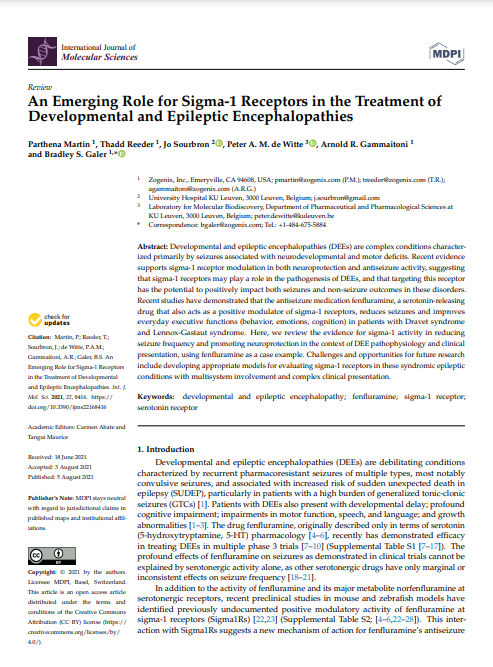An Emerging Role for Sigma-1 Receptors in the Treatment of Developmental and Epileptic Encephalopathies
August 2021
Abstract
Developmental and epileptic encephalopathies (DEEs) are complex conditions characterized primarily by seizures associated with neurodevelopmental and motor deficits. Recent evidence supports sigma-1 receptor modulation in both neuroprotection and antiseizure activity, suggesting that sigma-1 receptors may play a role in the pathogenesis of DEEs, and that targeting this receptor has the potential to positively impact both seizures and non-seizure outcomes in these disorders. Recent studies have demonstrated that the antiseizure medication fenfluramine, a serotonin-releasing drug that also acts as a positive modulator of sigma-1 receptors, reduces seizures and improves everyday executive functions (behavior, emotions, cognition) in patients with Dravet syndrome and Lennox-Gastaut syndrome. Here, we review the evidence for sigma-1 activity in reducing seizure frequency and promoting neuroprotection in the context of DEE pathophysiology and clinical presentation, using fenfluramine as a case example. Challenges and opportunities for future research include developing appropriate models for evaluating sigma-1 receptors in these syndromic epileptic conditions with multisystem involvement and complex clinical presentation.
© 2021 by the authors. Licensee MDPI, Basel, Switzerland. This article is an open access article distributed under the terms and conditions of the Creative Commons Attribution (CC BY) license (https://creativecommons.org/licenses/by/4.0/).

